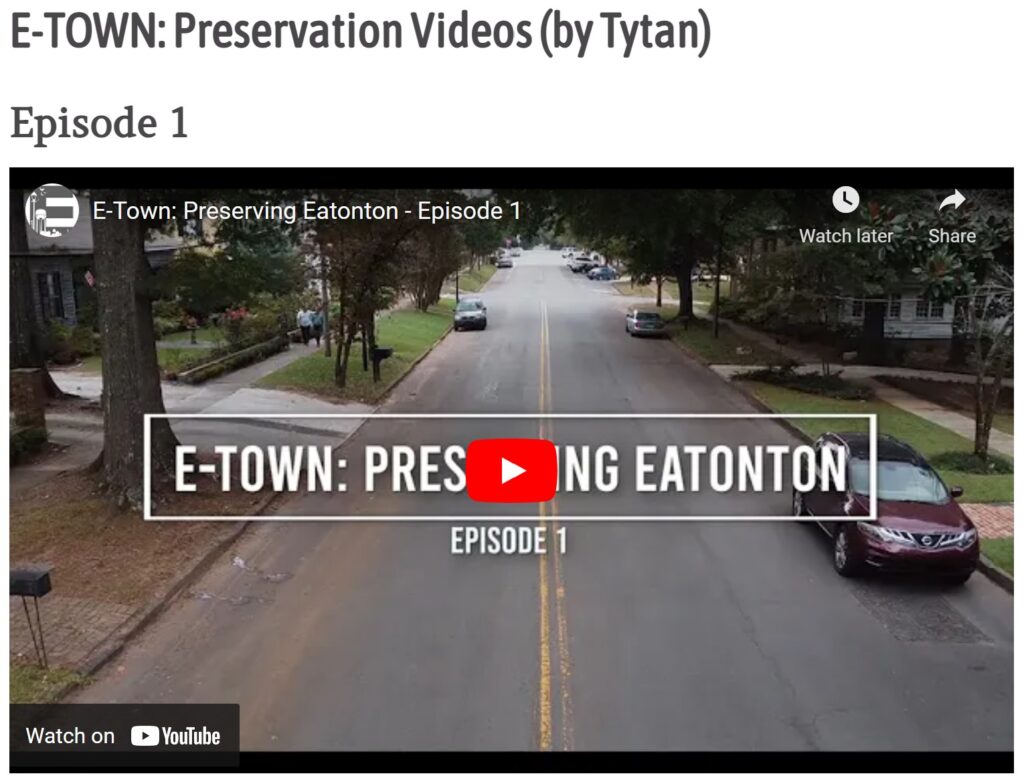To apply for a Certificate of Appropriateness (COA) click to download and complete the form. COA APPLICATION FORM.
Download the form, fill it in, and then take it to City Hall ( 201 N Jefferson Ave) or you may give it to a member of the current Historic Preservation Commission (HPC). Be sure to read the section specifying additional information you may need to submit. Forms need to be delivered to City Hall or to an HPC member AT LEAST 10 days prior to the next Design Review meeting. However, the HPC does recognize when timing is important and will usually work with applicants on form submission deadlines.
You only need a COA if your building is in the Plaza Historic District and the proposed change is “material” as opposed to just maintenance. See below for a description of Material Changes vs Ordinary Maintenance.
The procedure to obtain a Certificate of Appropriateness (COA) is detailed in the following chart. COA Procedure Chart.
Do I need to apply for a Certificate of Appropriateness?
If your property is in the Plaza historic district and you are planning to make a MATERIAL CHANGE, you must obtain a Certificate of Appropriateness letter by following our posted procedures and application process. Read below to see the difference between what is considered Ordinary Maintenance and a Material Change.
The City of Eatonton Historic Preservation ordinance states: Ordinary maintenance or repair of any exterior architectural or environmental feature in or on an historic property to correct deterioration, decay or damage or to sustain the existing form, and that DOES NOT INVOLVE A MATERIAL CHANGE IN DESIGN, MATERIAL OR OUTER APPEARANCE THEREOF, DOES NOT REQUIRE A CERTIFICATE OF APPROPRIATENESS. (COA)
EXAMPLES OF ORDINARY MAINTENANCE:
- Painting wood or metal with non-vinyl paint (note: painting or coating previously unpainted BRICK or STONE is considered a material change). Please note that it is illegal in the state of Georgia for Historic Preservation Commissions to make any rulings on color of paint.
- Replacing parts of windows or doors with same materials as original
- Replacing or reinstating portions of an existing chimney with same materials as original, as long as the shape and form of the chimney is not impacted by the change
- Replacement of roof material with same material. (Note: there are very few historic roofs in Eatonton; if historic character defining roof material is being replaced, this is a material change)
- Repair of gutters and downspouts (replacement of historic gutters or downspouts are considered a material change)
- Cleaning exterior of building BUT sandblasting requires a COA as the process may alter/damage the bricks or wood.
- Re-pointing bricks is typically considered maintenance BUT mortar being used must be “soft” mortar as Portland Cement will damage old brick
- Weather stripping, caulking, replacing broken glass and other general maintenance.
- General yard work; changes in plant materials. Note: major landscape changes such as additions of fountains, pathways, driveways, parking areas etc do require a COA
IT IS IMPORTANT TO NOTE THAT REQUIRING A COA ALLOWS THE HISTORIC PRESERVATION COMMISSION TO REVIEW YOUR PROPOSED CHANGE. THE EATONTON HPC HAS APPROVED 99% OF ALL SUBMITTED CHANGES TO DATE, A FEW WITH MINOR CHANGES. IN SOME CASES, THE COMMISSION REVIEW HAS SAVED OWNERS UNNECESSARY WORK AND/OR FUTURE MAINTENANCE PROBLEMS
EXAMPLES OF MATERIAL CHANGES
- Wholesale replacement of any exterior feature, such as complete replacement of wood siding, complete rebuilding of chimneys, complete replacement of porch decks or structural elements, removal, addition or replacement of any architectural features (columns, gingerbread, steps, porches, shutters etc)
- Replacement or addition of windows or doors
- A change that will alter the shape of the roof in any way, including addition or removal of dormers. (In the rare case of an historic roof material, the replacement of part or all of roof material)
- A change that alters the shape, material or structure of the sides, porches, entrances or other external parts of the building.
- Changes to a porch pier foundation such as changing the infill method
- Any additions to the house (extensions, expansions etc.)
- Addition of signs to the property
- Removal, or addition of outbuildings on the site. Changes to existing outbuildings follow the same guidelines as for the main structure
- Addition of any ramps or other access aids to the property
- Major ‘hardscape’ changes to the yard or verge, such as addition/removal of fountains, swimming pools, gazebos, pathways, driveways, parking areas and so on.
IT IS IMPOSSIBLE TO LIST ALL EXAMPLES OF MATERIAL CHANGES. IF IN DOUBT, CALL THE CURRENT HPC CHAIR (see the website for current personnel contact data).

